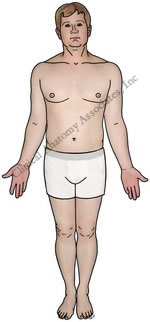
Anatomical position
UPDATED:The term [proximal], from the Latin [proximus] meaning "next" and its counterpart [distal], from the Latin [distans] meaning "distant", have been poorly defined and this causes misunderstanding in the proper use of these terms. This is particularly true in the medical industry.
The classical definition of [proximal] are "nearest, closer to the origin, closer to the point of reference" and also "closer to the beginning", or "opposite of distal". [Distal] is, of course, the opposite. All of these definitions are lacking a consensus between the participants in a conversation. This lack of proper definition could potentially lead to problems in an interventional situation and a patient could be injured.
In our lectures and training materials we use a working definition1 as follows:
“Proximal has two meanings:
1- Closer to the point of attachment, where one end of the attached structure is free, and
2- Closer to the point of origin of flow of a fluid”
Distal is of course, opposite to proximal.
In the first acception of the word, a clear example is the attachment of the upper and lower extremities. Moving away from the shoulder or the hip joint is a distal movement. “The wrist joint is distal to the elbow joint”. The same is true for the Fallopian (uterine) tube, where the proximal attachment of the tube is to the uterus and the free distal end of the tube is its fimbriated end.
In the second acception of the word, in any anatomical structure, organ, or system where there is flow of a fluid (food, urine, bile, blood, etc.) it is accepted that normal flow (antegrade flow) goes from proximal to distal and that abnormal flow (retrograde flow) goes from distal to proximal.
1. Use of this definition is permitted, as long as CAA, Inc. is credited, or a link to this article is posted with it.
Image property of: CAA.Inc. Artist: Victoria G. Ratcliffe